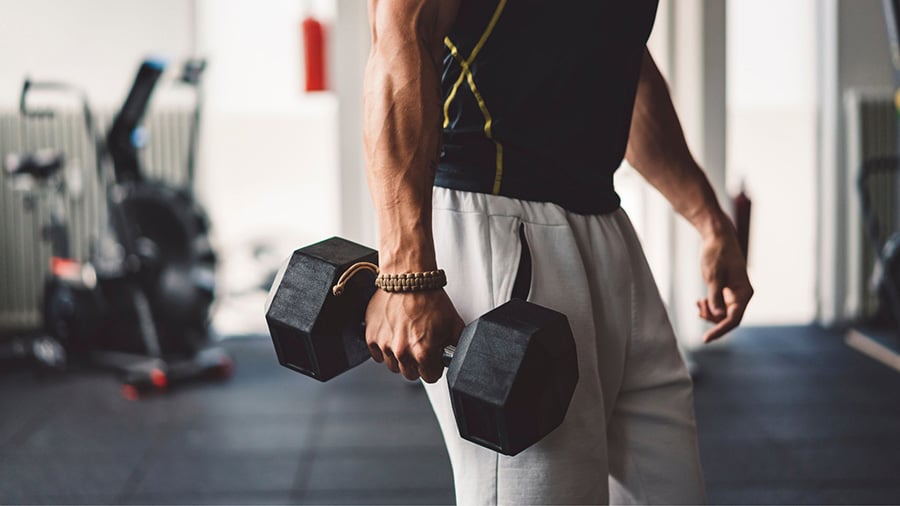Follow your evolution in bodybuilding is essential to achieving your goals. Whatever your training program, measuring your progress will help you gain muscle or lose fat. In this article, I'll show you some easy routines to put in place to stop stagnating.
Why should you monitor your progress?
Work out Most of the time, it meets a specific objective: getting back into shape, losing weight, gaining muscle mass, improving general physical condition, etc.
Achieving these goals requires several sessions per week in the weight room.
From the very first weeks of training, beginners will be able to observe the beginning of physical transformation. But they will quickly face a phase of stagnation. If you are in this situation, discover without further delay my advice to continue to progress.
And it's even worse for experienced athletes who have been working out for several years. Indeed, the body gradually gets used to the constraints it has to face during training. The muscles adapt and develop more and more slowly.
Each repetition or each kilo gained on a bench press, a deadlift, a squat or one of the many isolation exercises is then a huge progress. But in order to know this, you have to keep track of your progress with a weight training session on the other.
With time and experience, tracking your progress will help you build a customized strength training program. You will know exactly if a particular exercise is providing the expected benefits.
Knowing your progress in weight training is also essential to stay motivated. As in any sport activity, motivation is a driving force for success. And what better way to stay motivated than to watch your progress and reach your goals?
The best tips for measuring your progress in weight training
1. Set goals for yourself
Tracking your progress in bodybuilding goes hand in hand with setting objectives. In fact, this principle applies to all sports: fitness, crossfit, running, etc.
Week after week, you will be able to compare the results obtained according to the objectives previously set.
Your goals are personal. When approaching a competition, a bodybuilder will try to reduce his body fat to 6 or 7 %. On the other hand, a person who wants to gain muscle volume will increase his caloric intake to gain 5 or 6 kilos on the scale.
Whether you are doing physical activity for lose weight or to gain muscle, defining a vision on the short, medium and long term is the starting point.
2. Keep an up-to-date training log
There are different factors of progression in weight training.
The weights used, the number of repetitions, the tempo or the recovery times are all parameters to measure to know your evolution.
Of course, it is impossible to remember all these different elements for each of the weight training exercises in your sports program. It is therefore in your best interest to record your performance in a training booklet physical or digital.
You will be able to prepare your sessions in advance, according to your objective, or call upon a sports coach who will design a personalized program for you.
3. Observe your body
In the vast majority of cases, bodybuilders are looking to build a athletic body.
One of the best ways to assess your physical transformation is to look at your figure in the mirror. You will quickly see if you have managed to lose weight or build muscle in your upper body and legs.
A change in your body, even a small one, is a sign of progress. For example, if you're doing a dry run, you'll gradually see your abs appear. This means that you are on the right track and that your physical preparation is working.
4. Weigh yourself regularly
To be sure you are making progress, it is best to confirm your visual observations by weighing yourself regularly.
The ideal is to step on the scale once a week, in the morning on an empty stomach.
Whether you want to bulk up or lose fat, your evolution will never be linear. It will happen that you gain a few grams, even though you have been losing weight for several weeks. This is a normal phenomenon that can be caused by countless factors: a lack of sleep, a higher than usual level of stress or a diet that is too salty. There is no need to worry about it as long as it is exceptional.
5. Follow your diet
Strength training and sports nutrition are inseparable.
To progress in bodybuilding, your efforts at the gym alone will not be enough. You will also have to pay attention to your diet.
To control your daily calorie intake and macronutrients (proteins, carbohydrates and fats), be sure to record what you eat in an application such as MyFitnessPal.
To conclude
With these 5 tips, you can now follow your muscular progress. Whether you're a beginner or a more advanced exerciser, any progress involves setting realistic and measurable goals. Then record your performance at each workout and watch your physique until you reach your desired result!









